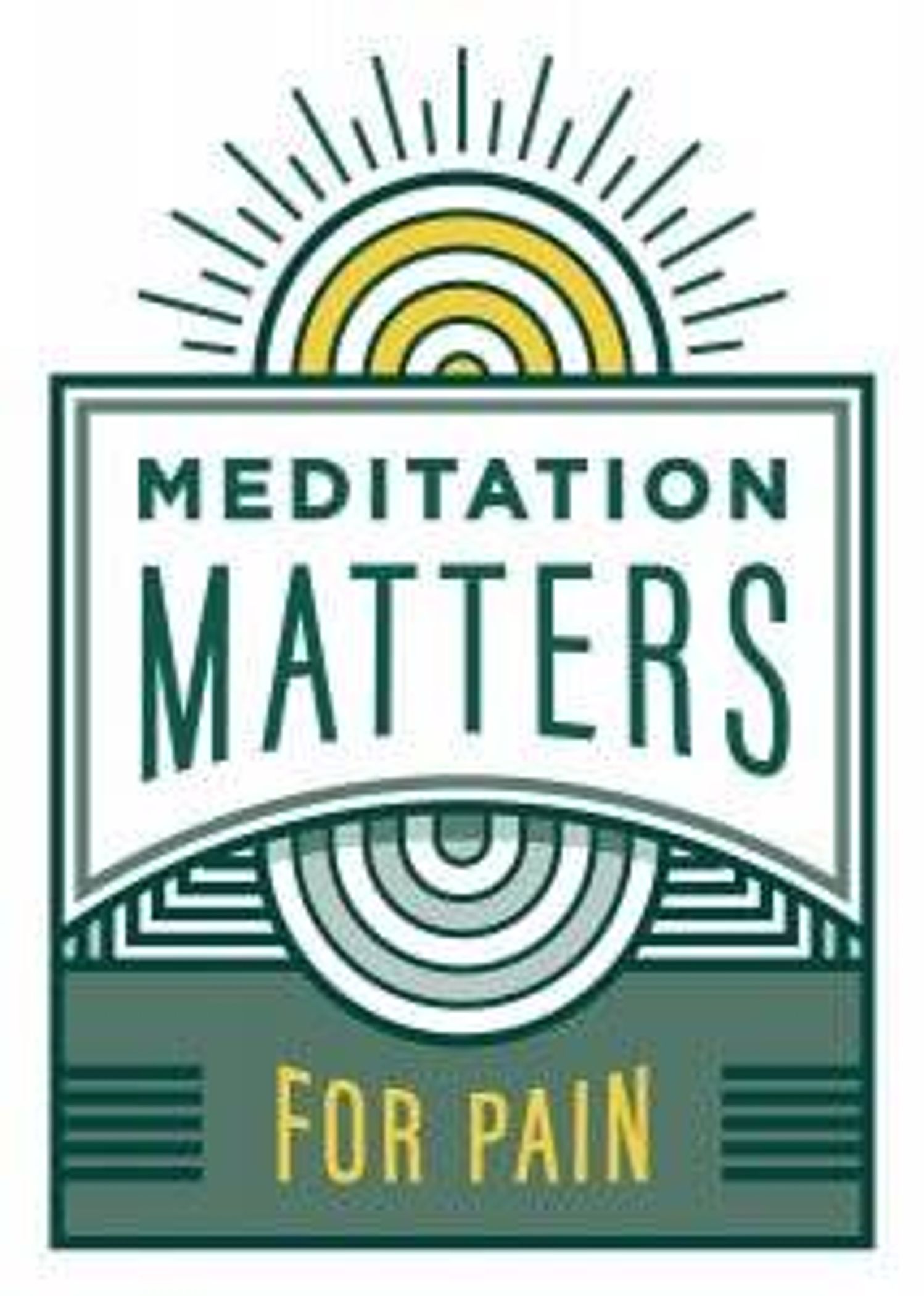How Meditation Can Help With Chronic Pain
Experts say meditation can work as well as medications for some people
(Editor’s note: This is the second story in a four-part weekly series on meditation, including its benefits for pain management, mental health and overall well-being. The first article in the series is Do You Meditate? Here's Why You Might Want To; the third is How Meditation Can Help With Grieving; and the fourth is Could Meditation Benefit Cognitive Function?)


You've probably figured out that taking a few deep breaths in a stressful situation can calm you down. And you may know that practicing meditation on a regular basis helps many people cultivate serenity. But did you know that some studies show meditation can alleviate pain?
“We have pretty strong evidence that mindfulness meditation is helpful for chronic pain conditions,” says Wen Chen, chief of the basic and mechanistic research branch at the National Center for Complementary and Integrative Health’s Division of Extramural Research in Bethesda, Md. The center is part of the National Institutes of Health.
“We experience pain where the body is injured, but we also experience the psychological and social aspects of pain. Mindfulness meditation works on the psychological aspect,” Chen says.
“Meditation is an ancient practice, and we know very little about how it works,” she adds. “We do know that it’s low risk, it’s not invasive and you can do it on your own. Lots of people find it beneficial.”
And it appears that an increasing number of Americans are finding meditation beneficial for a variety of different reasons. In 2012, only 4.1% of adults in the U.S. practiced meditation, but by 2017, the number had increased to 14.2%.

A government-sponsored site with an overview of mindfulness meditation reports that research about the practice’s ability to reduce pain “has produced mixed results,” but in some studies, “scientists suggest that meditation activates certain areas of the brain in response to pain.”
Reducing Pain Through Mindfulness Meditation
An estimated 11.2% of the U.S. adult population suffers from chronic pain, according to a research post Chen published three years ago.
“Prescription opioid medications present serious risks, both medically and socially,” she wrote, and she cited a study that provides “compelling evidence for the existence of a non-opioid process in the brain to reduce pain through mindfulness meditation.”
"With mindfulness meditation, you accept the (pain) message, and gradually, your body and brain stop sending it. It's like turning down the volume control."
So what is mindfulness meditation? One evidence-based form, known as mindfulness-based stress reduction (MBSR), is an eight-week program developed by Jon Kabat-Zinn at the University of Massachusetts Medical Center in the 1970s.
A teacher-certification program has placed its instructors in almost every state, but you also can learn the method through Kabat-Zinn’s MP3s and CDs. Plus, some pain-management programs offer mindfulness-based stress reduction training, so check with your doctor.
“MBSR has a breathing component where you focus on your breathing as you meditate. That aspect of slow breathing is very helpful,” Chen says, “and quite a few researchers point toward the breathing component as quite important to relieve pain. Just twenty minutes of mindful breathing can often do the trick.”
She adds that in addition to looking at MBSR, researchers also are evaluating mindfulness-based cognitive therapy, a modified form of psychotherapy, and progressive relaxation techniques for pain management.
Other Benefits of Meditation for Pain Control

Danny Penman, a journalist in Bristol, England with a Ph.D. in biochemistry, teaches and writes about meditation. He is the co-author with Vidyamala Burch of the book Mindfulness for Health: A Practical Guide to Relieving Pain, Reducing Stress and Restoring Wellbeing, published in the U.S. as You Are Not Your Pain.
The British Medical Association honored the book with first place in the organization's 2014 Medical Book Awards competition. In 2013, a clinical trial conducted at the University of Manchester in England showed that the eight-week program outlined in the book is “highly effective at reducing anxiety, stress and depression.”
Other clinical trials have shown that mindfulness is “at least as effective as the main prescription painkillers,” Penman says.
Powerful painkillers do dull the sensation of pain, but the medications also lose their effectiveness over time and have addictive qualities. According to the National Institute on Drug Abuse, roughly 21% to 29% of patients prescribed opioids for chronic pain misuse them and between 8% and 12% develop an opioid use disorder. About 80% of people who use heroin first misused prescription opioids.
“We all have to come to terms at some point with illness or suffering, and I believe that in the longer run, mindfulness is at least one of the answers,” Penman says. Pain, he adds, is a message, and the body and the brain keep sending that message.
“With mindfulness meditation, you accept the message, and gradually, your body and brain stop sending it. It’s like turning down the volume control,” he says.
Professional Reassurance: ‘You Can’t Fail at Meditation’
While still in school, Penman started meditating as a means of stress reduction. In 2006, he was in a paragliding accident.
“Once my pain was under control, I started meditating seriously, and after a couple of weeks, I was able to reduce my painkiller intake by two-thirds,” he says. He later trained as a meditation teacher specializing in pain relief.
Many of us know people who say they have tried meditation, but failed. Penman says that’s not possible.
“You can’t fail at meditation. Ironically, the moment you think you’ve failed is a moment of mindfulness because you have come back into the present moment and are no longer wrapped up in your other thoughts,” he says.
Some people who think they have failed “build a catastrophe around it, letting in fears and anxieties that can amplify their pain,” Penman says.
“Meditation is like physical exercise,” he continues. “The more you do it, the more you begin to relax, and the easier gets. You may still have doubts or fears, but it gets easier each time you do the basic practice and focus on your breath. The more you meditate, the more you will benefit.”
Whether you’re just starting or giving mindfulness meditation another go to help cope with pain, once you understand what to do, you need to set aside only 10 or 20 minutes each day for the practice.
Over time, it will become a comfortable habit, so Penman suggests you simply begin. He says, “The hardest thing in the world is taking that first breath.”


